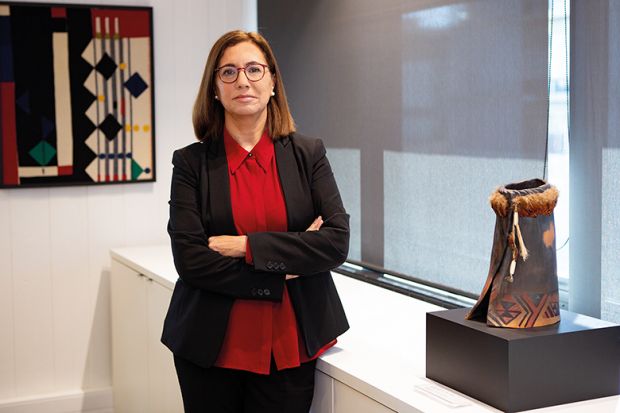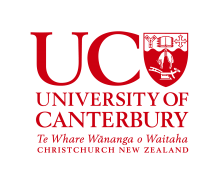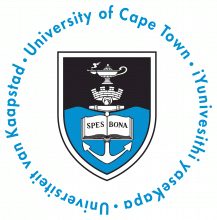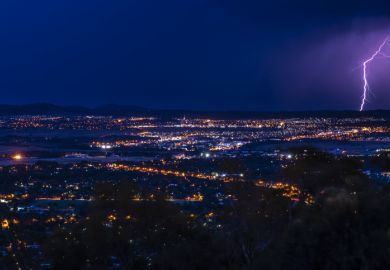Browse the full results of the World University Rankings 2024
When Cheryl de la Rey moved from boisterous South Africa to the tranquillity of New Zealand to lead the University of Canterbury, in the South Island’s largest city of Christchurch, she had no idea what lay ahead.
It was February 2019. A month later, she found herself addressing the biggest mass gathering in the institution’s then 146-year history after attacks on two Christchurch mosques by a heavily armed extremist had left 51 people dead.
In one sense, the event was familiar territory for de la Rey. As the recently departed vice-chancellor of the University of Pretoria and a former deputy vice-chancellor at the University of Cape Town, she was no stranger to campus lockdowns.
But it was also entirely new ground for an expatriate leader preparing to counsel 5,000 distraught staff and students. “Your sense of what the message is often comes from being of a community, and being immersed in that community, and I had arrived about a month ago.
“My speech was framed around what I would call fundamental human rights principles. I spoke – to use an oft-used phrase – from the heart, and it was really well received. That tragedy [was] an opportunity to get to know my new community a lot quicker than I would have. I came to the conclusion that my value system and the value system of my new community were the same.”
It was more than a crash course in values. De la Rey quickly came to know the mayor, the police commander and the head of the district health board during weekly meetings of public agency leaders, convened in the atrocity’s aftermath to find ways of boosting social inclusion.
“If we see things in a more coordinated, holistic fashion, by working together, we are likely to find solutions that are more comprehensive and longer lasting,” explains de la Rey, who began her academic life as a psychologist researching the role of gender and race in social cohesion. “That came out of the mosque attacks.”
The massacres had a “profound impact” on the region, the city, the institution and its new leader. But the scars it left were less apparent than those wrought by another of Christchurch’s defining tragedies: the February 2011 earthquake that devastated the city’s heart, killing 185 people and temporarily liquefying much of its land.
An aftershock to a nearby tremor five months earlier, the disaster threatened the university’s very existence as people abandoned a city in reconstruction mode. One-quarter of commencing students never returned, and the government reportedly considered relegating the institution to provincial college status rather than funding major works.
Instead, the government in Wellington maintained Canterbury’s funding at pre-quake levels despite the enrolment decline, and it committed NZ$260 million (£126 million) to help rebuild the university’s science and engineering facilities. A “Futures Programme” focused largely on capital projects, but also on strategies to lure students back to the university by transforming its teaching, gradually began to bear fruit. Enrolments started increasing again in 2016 and reached record numbers five years later. The university returned to surplus in 2018, 12 months earlier than predicted.
When de la Rey arrived the following year, she found an institution with brand-new buildings that had “perhaps not given enough attention to the digital” aspects of education. She spent the year developing a 10-year strategic vision with a strong emphasis on technology.
“Out of that, in my 2020 budget, there had already been an allocation for a digital transformation initiative,” she says. “Covid, which obviously none of us saw happening, gave me an opportunity to accelerate that digital transformation. And in accelerating, of course, we put more budget behind it.”
De la Rey’s thinking about digital offerings had been influenced by British educationist Sir Michael Barber’s 2013 report An Avalanche Is Coming, which warned of the existential threat universities faced from free online courses and giant for-profit colleges.
“I was conscious that the world of educational delivery was changing significantly,” de la Rey says. “That’s been on my mind for a long time.” Covid presented a rationale to address this challenge in more than an “incremental” way.
“I see the Covid experience as a time of accelerated change. It was my opportunity to transform the platforms, but also look at how we can embrace new technologies. Right now, think about the possibilities of artificial intelligence. ChatGPT is one of them, but there’s a whole range of technologies to [help us] do what we aspire to do better.”
In some senses, the earthquake helped to inure Christchurch and its university to the hardships to come. The pandemic and other global events have left at least half of New Zealand’s universities in desperate straits, as the combination of rising costs, declining enrolments and sluggish funding growth forces major course and job cuts.
Canterbury, by contrast, is seeing something of a boom. Enrolments at the South Island institution are up by about 6 per cent this year, while they are falling at North Island institutions. This may be partly a response to burgeoning living costs up north, as Auckland school-leavers seek a cheaper life in the south, but de la Rey credits the revitalisation of the region.
“It’s not often in the world that a place has an opportunity to reinvent itself. That’s what Christchurch has done.” She cites as example the architectural combination of old and new, with the restored 1881 cathedral sitting alongside new buildings such as the convention centre, which incorporates Māori elements in a glass and steel structure.
“It’s that combination that Christchurch has been able to achieve, and continues to work on, that makes it an exciting destination. There’s new opportunity. The economy’s doing well.”
On the financial front, the university posted a NZ$31 million deficit last year – considerably more than the projected NZ$14 million shortfall, and a big turnaround from the previous year’s NZ$19 million surplus. De la Rey attributes this largely to unrealised investment losses sustained by the university’s foundation and trusts.
“We lost some money in the markets in our trusts last year,” she says. “If you look at the university operation, it’s not running a deficit.”
That said, de la Rey is planning for future operational deficits. “This is about choosing to invest in strategic areas [including] digital transformation, and developing a sound business case for making those investments upfront, so that you’re going to see a return in the future.”
Indigenous relations is another area of both commonality and difference between de la Rey’s original and adopted homelands. A former executive director of South Africa’s National Research Foundation, she has experience with broadscale efforts to support research into Indigenous knowledge systems – an area of increasing focus for New Zealand.
“The big difference is in the treaty that was signed between the Crown and Māori tribes,” she said.
The document, signed in 1840 between the British and more than 540 Māori chiefs, gave the Crown exclusive rights to buy Māori land; in return, the Māori were guaranteed full rights of ownership of their lands and given the rights of British subjects.
“South Africa [has] much more history of wars,” de la Rey adds. “In New Zealand, the treaty was really the framework for things that should have happened, and didn’t.”
That is something that universities and many other agencies are trying to set right, by articulating aspirations to become “treaty-led” organisations. The idea has aroused some scepticism among academics who say they have no idea what the term means.
“I find it a helpful concept because it gives a framework with a set of principles,” says de la Rey. “Basically, it’s about expectations and understanding expectations. The challenge is in translating those principles into practice.”
john.ross@timeshighereducation.com
This is part of our “Talking leadership” series with the people running the world’s top universities about how they solve common strategic issues and implement change. Follow the series here.
Register to continue
Why register?
- Registration is free and only takes a moment
- Once registered, you can read 3 articles a month
- Sign up for our newsletter
Subscribe
Or subscribe for unlimited access to:
- Unlimited access to news, views, insights & reviews
- Digital editions
- Digital access to THE’s university and college rankings analysis
Already registered or a current subscriber? Login













